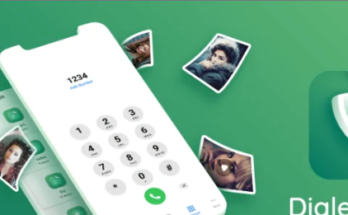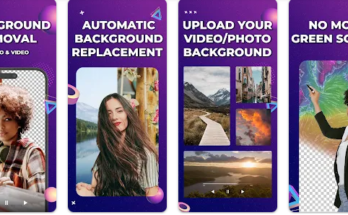Ever wished you could capture incredible close-up shots with your phone, zooming in on distant details like a professional photographer? Samsung’s latest smartphones boast a mind-blowing 200x zoom feature, making faraway objects appear within reach. But what if you don’t own a Samsung phone with this cutting-edge technology? Fear not, the world of mobile apps offers various zoom solutions promising to bridge the gap.
This review dives deep into the realm of high-zoom smartphone apps, exploring their capabilities and limitations. We’ll investigate the technology behind Samsung’s impressive zoom and see if apps can truly replicate it. Buckle up as we explore the features, pros, cons, and alternatives to these zoom apps, helping you decide if they can deliver the Samsung-like zooming experience you crave.
What is High-Zoom on a Smartphone?
High-zoom on a smartphone allows you to magnify distant objects significantly, bringing them closer in your photos. Standard phone cameras offer limited zoom capabilities, often relying on digital zoom which simply enlarges the central portion of the image, resulting in a loss of detail and pixelation.
How Does Samsung’s 200x Zoom Work?
Samsung’s revolutionary zoom utilizes a combination of advanced hardware and software:
- Periscope Lens: This innovative lens uses a folded design with mirrors to achieve optical zoom, magnifying the image without sacrificing quality. Unlike traditional telephoto lenses, periscope lenses fit comfortably within a slim phone body.
- Image Processing Algorithms: Samsung’s sophisticated software plays a crucial role in enhancing the zoomed-in image. These algorithms work to reduce noise, sharpen details, and improve overall image quality.
Important Note: While impressive, it’s essential to understand that even Samsung’s 200x zoom has limitations. At extreme zoom levels, some image degradation might occur.
Features of High-Zoom Apps
High-zoom apps offer a variety of features, although it’s important to remember they primarily rely on digital zoom:
- Variable Zoom Levels: These apps typically advertise high zoom levels, often reaching impressive numbers like 100x or even 200x.
- User Interface: Apps provide controls for adjusting the zoom level, often with a slider or zoom buttons. Some offer additional features like a virtual joystick for precise image stabilization while zoomed in.
- Image Enhancement Tools: Some apps include basic image editing tools like brightness and contrast adjustments to improve the appearance of zoomed-in photos.
Pros of High-Zoom Apps
| Pros | |
|---|---|
| Increased Zoom Range: Apps can extend your phone’s zoom capabilities beyond the standard digital zoom, allowing you to capture closer shots. | |
| Convenience and Affordability: Apps offer a readily available and relatively inexpensive way to enhance your phone’s zoom compared to upgrading to a new phone with advanced zoom hardware. | |
| Additional Features: Some apps provide basic image editing tools and functionalities like video recording with zoom capabilities. |
Cons of High-Zoom Apps
| Cons | |
|---|---|
| Image Quality Degradation: Heavy reliance on digital zoom can lead to a significant loss of detail, pixelation, and noise in zoomed-in photos. | |
| Limited Effectiveness at Extreme Zoom Levels: As the zoom level increases, the quality of the image diminishes rapidly, making extreme zoom features less practical. | |
| Unreliable Image Stabilization: Zooming in can magnify camera shake, making it difficult to capture sharp images, especially at high zoom levels. |
High-Zoom App Alternatives
| Alternative | |
|---|---|
| External Lens Attachments: Clip-on telephoto lenses offer a more hardware-based approach to zooming, often providing better image quality than purely software-based solutions. | |
| DSLR Camera with Zoom Lens: For serious photography enthusiasts, a DSLR camera with a dedicated zoom lens will deliver superior image quality and zoom capabilities compared to any smartphone or app. | |
| Professional Photo Editing Software: Advanced photo editing software allows you to crop and enlarge specific areas of an image while maintaining some detail, offering a more controlled approach to zooming in on existing photos. |
Conclusion and Verdict: How to Get 200x Zoom Like Samsung
While high-zoom apps offer an accessible way to extend your phone’s zoom range, it’s important to manage expectations. They cannot replicate the image quality and performance of Samsung’s 200x zoom achieved through a combination of specialized hardware and advanced software processing.
Conclusion and Verdict: How to Get 200x Zoom Like Samsung
-
Casual Users: If you’re a casual user who occasionally wants to capture slightly closer zoom shots, high-zoom apps can be a convenient and affordable option. Just be aware of the limitations in image quality at high zoom levels.
-
Photography Enthusiasts: For photography enthusiasts seeking professional-grade zoom capabilities, high-zoom apps likely won’t suffice. Consider alternative solutions like external telephoto lenses for your phone or investing in a DSLR camera with a dedicated zoom lens for superior image quality and control.
Future of App-Based Zoom:
The world of mobile app development is constantly evolving. Advancements in image processing algorithms and smartphone camera hardware might pave the way for future app-based zoom solutions that bridge the gap with dedicated phone hardware. However, for now, the limitations of purely software-based zoom remain.
FAQs: How to Get 200x Zoom Like Samsung
Q: Can any app truly achieve 200x zoom like Samsung?
A: No, current high-zoom apps primarily rely on digital zoom, which significantly degrades image quality at extreme zoom levels. Samsung’s 200x zoom utilizes a combination of advanced hardware (periscope lens) and software processing to achieve superior results.
Q: What are the drawbacks of using zoom apps?
A: The main drawbacks are image quality degradation (loss of detail, pixelation, noise) at high zoom levels and limited effectiveness beyond moderate zoom ranges. Additionally, zoomed-in photos can be susceptible to camera shake.
Q: Are there any free zoom apps worth using?
A: Yes, several free zoom apps are available. However, they might come with limitations like intrusive ads or lower zoom capabilities compared to paid versions. It’s important to read reviews and compare features before downloading any app.
Q: How can I improve my phone’s zoom capabilities without an app?
A: Here are a few options:
- Utilize the native zoom features of your phone camera app. While limited, it can offer a slight improvement over unzoomed photos.
- Maintain a clean camera lens. A dirty lens can affect image quality, especially when zoomed in.
- Use a tripod for stability. This is crucial when using high zoom levels to minimize camera shake and capture sharper images.
Q: What are some factors to consider when choosing a zoom app?
A: Consider factors like:
- Maximum zoom level offered by the app.
- User reviews and ratings to gauge user experience and app effectiveness.
- Price point (free vs. paid) and features offered in the paid version.
- Additional functionalities like image editing tools or video recording with zoom.
By understanding the limitations and potential of high-zoom apps, you can make an informed decision about whether they’re the right solution for your smartphone photography needs.



